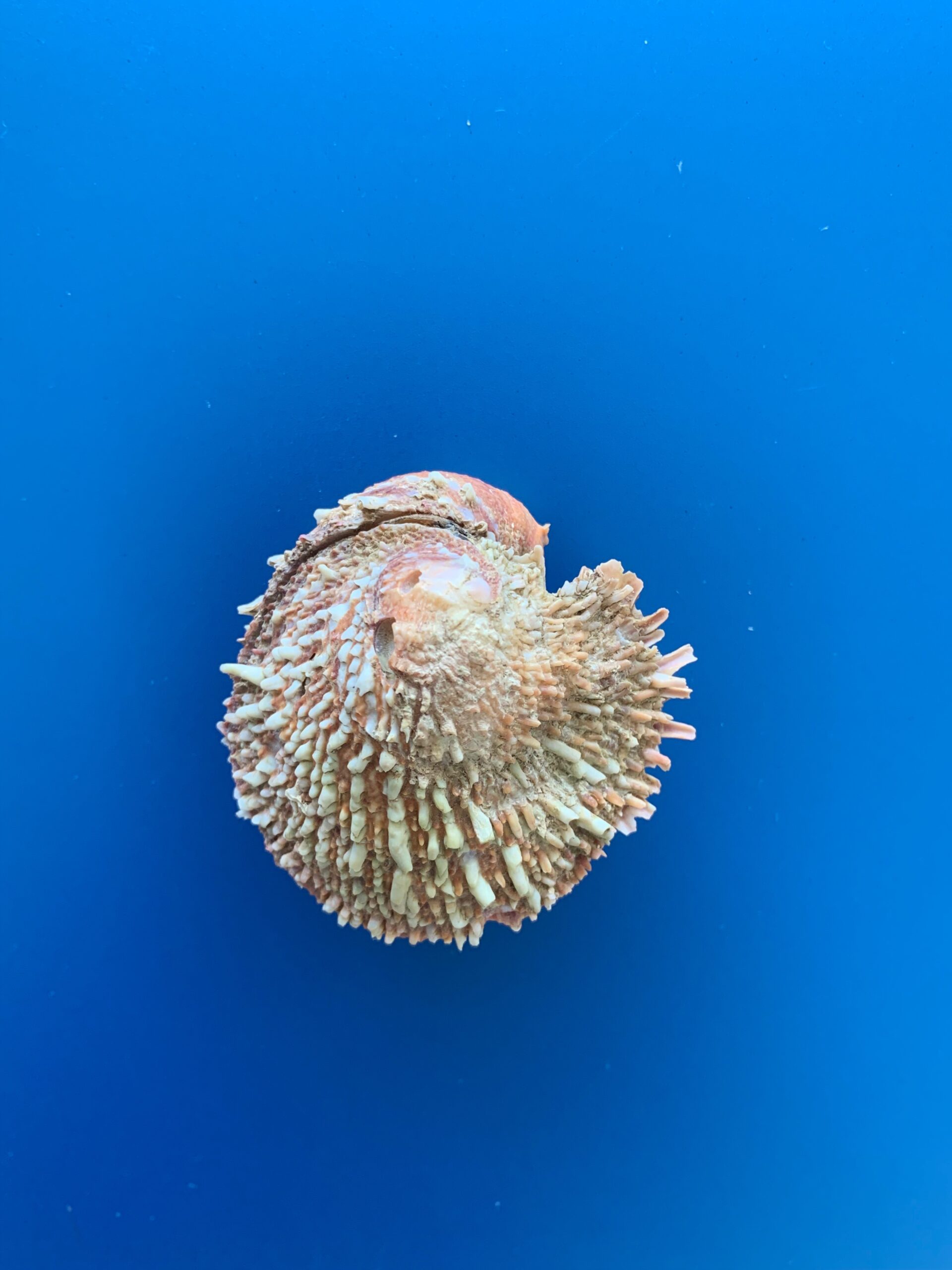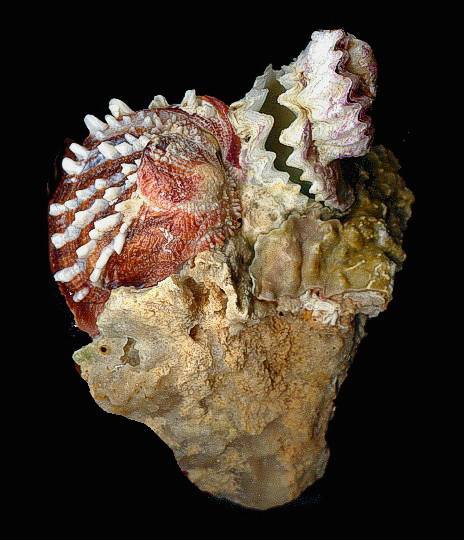
Chama pacifica Broderip, 1834
Shell large, solid strongly inequivalve with lower valve bigger and deeper than the upper. Outline irregular, generally suboval to subcircular. Exterior white, red, orange or purple; interior white usually splashed with pale or deep rose, particularly round the margins. Sculpture of short spines more pronounced towards the margin where they are concentrically lamellate. More prominent spines on the left side of the valve. Internal margin encircled by a finely-crenulate-striate ridge. It grows its shell up to 70mm in height.
Karachle PK, Angelidis A, Apostolopoulos G, Ayas D, Ballesteros M, Bonnici C, Brodersen MM, Castriota L, Chalari N, Cottalorda JM, Crocetta F, Deidun A, Đođo AZ, Dogrammatzi A, Dulčić J, Fiorentino F, Gönülal O, Harmelin JG, Insacco G, Izquierdo-Gómez D, Izquierdo-Muñoz A, Joksimović A, Kavadas S, Malaquias MAE, Madrenas E, Massi D, Micarelli P, Minchin D, Önal U, Ovalis P, Poursanidis D, Siapatis A, Sperone E, Spinelli A, Stamouli C, Tiralongo F, Tunçer S, Yaglioglu D, Zava B, Zenetos A (2016) New Mediterranean Biodiversity Records (March 2016). Mediterranean Marine Science 17: 230-252
2005
UNA
Reflexed jewel box
Chamids are stenohaline nearshore inhabitants of rocky shores and coral reefs with a poor ability to withstand low salinity as that of estuarine regions. The eggs are small, fertilization occurs externally, and the larvae probably undergo a prolonged planktonic development.
No impacts on biodiversity have been reported.
No impacts on health and ecosystem services have been recorded.
Yes
No
Records of Chama pacifica
Sites where Chama pacifica has been recorded in the Hellenic Seas.


